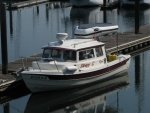capt. meares
New member
- Joined
- Jul 3, 2013
- Messages
- 146
- Reaction score
- 0
- C Dory Year
- 1988
- C Dory Model
- 22 Cruiser
- Vessel Name
- Vianey
I have the original two gas tanks that came with my boat along with the original fuel selector switch. I have not traveled far enough to need to use more than one tank since I have had the boat, but that will soon change. when I do want to change over to the other tank which has sat empty for a year and just got filled up, I expect there will be air in the line, and I need to bleed it. Will it be so simple as to just turning the switch and no need to do anything? What is the best methodical way to do this? What other things should I be aware of?
Thank you
Thank you

